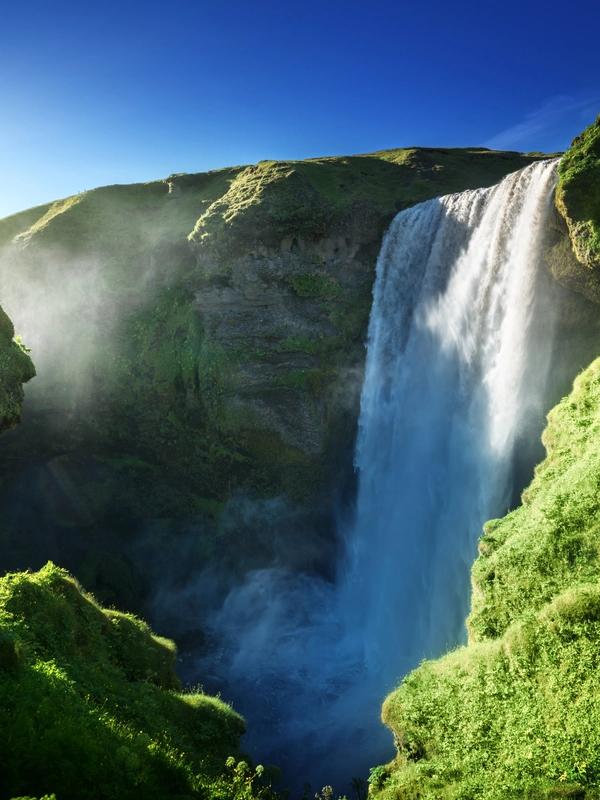
Iceland Weather in July: What to Expect in 2026
When planning a trip to Iceland, knowing what weather to expect helps you pack right and make the most of your adventure. July is one of the best times to visit this incredible island, with mild temperatures and days that barely get dark.
I've been to Iceland in summer, and July really does offer that sweet spot of comfortable weather and easy access to the country's amazing landscapes. Whether you want to drive the Ring Road or check out some remote highlands, July gives you the best chance to see it all.
Key Takeaways
- July is Iceland's warmest month with temperatures of 10-15°C (50-59°F), sometimes reaching 20-25°C (68-77°F) in eastern areas
- You'll see some rain (around 52mm on average) with the north typically drier than the south and west
- No snow in July - it's full summer with all roads open, even the highland F-roads
- Super long daylight (18-21 hours) with the midnight sun effect, especially up north
- Weather changes depending where you are—eastern Iceland is usually warmest while the west tends to be windier and wetter
- It's often windy, making temperatures feel cooler than they are
Overview of the Weather in Iceland in July
July is peak summer in Iceland, bringing the warmest temperatures, tons of daylight, and the best conditions for exploring. Just remember that Iceland's weather can turn on a dime—you might get sunshine, rain, and wind all in the same day.
Unlike many European summer destinations where you might be melting in the heat, Iceland stays refreshingly cool. This makes July perfect for hiking and sightseeing without sweating through your clothes.
The big bonus is that all roads are open, including the highland F-roads that stay closed most of the year. This means you can visit amazing places like Landmannalaugar or Thorsmork that you simply can't reach in winter.
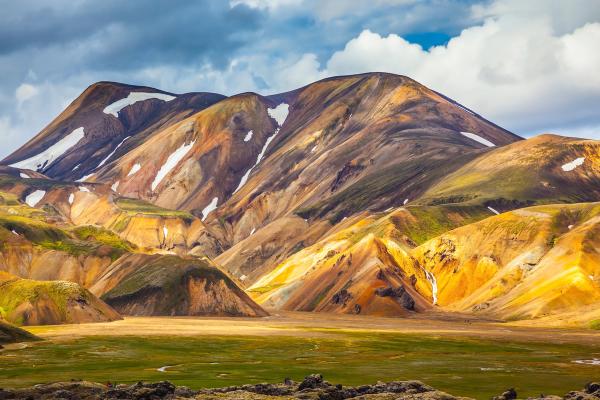
Temperature
In July, temperatures typically hang around 10-15°C (50-59°F) during the day. Nights stay pretty mild too, with lows between 6-9°C (43-48°F), which makes camping totally doable for summer travelers.
On sunny days, it can get warmer, sometimes reaching 20°C (68°F) across much of the country. Eastern Iceland often gets the warmest weather, with temperatures sometimes reaching 20-25°C (68-77°F) on clear days. The highest temperature recently recorded was 27.5°C (81.5°F) at Egilsstaðir airport in July 2024.
Just keep in mind that Iceland's weather can flip quickly. You might start with a sunny morning that turns into a chilly afternoon when clouds move in or the wind picks up. The wind makes temperatures feel much cooler than what your weather app shows.
Rainfall
While July is one of Iceland's drier months, you should still plan for some rain. The country gets around 52mm of precipitation in July, usually spread over 10-12 days. This often comes as light drizzle rather than heavy downpours, though you might get the occasional shower.
The amount of rain depends on where you are. Western and southern Iceland, including Reykjavík and the Snæfellsnes Peninsula, usually get more rain (50-63mm). Northern areas around Akureyri stay drier, with about 34mm for the month.
In 2024, western Iceland had some unusual weather with record rainfall in July, while the north and east stayed drier and sunnier. That shows how much Iceland's weather can change from year to year.
Snow
You won't see snow in Iceland during July—it's full-on summer. Mountain passes and highland roads that are buried in snow most of the year are completely clear and easy to drive. Even the higher areas are generally snow-free, though you might spot a bit of leftover snow on the highest peaks or in permanent ice caves.
This snow-free period makes July ideal for reaching remote areas and hiking trails that you can't access in other seasons.
Daylight Hours
One of the coolest things about July in Iceland is the crazy amount of daylight. Early in the month, Iceland gets over 20 hours of daylight, with the sun setting for just a short time before coming back up. On July 1, the sun rises around 3:05 AM and sets around 11:56 PM in Reykjavík, giving you nearly 21 hours of daylight.
As the month goes on, daylight hours gradually decrease, but they're still long. By mid-July, Reykjavík gets about 19 hours and 45 minutes of daylight, and by the end of the month, roughly 18 hours.
In northern Iceland, it's even more extreme. Places like Akureyri and the Westfjords experience the Midnight Sun, where the sun barely goes below the horizon, creating a continuous twilight all night. This means you can easily explore or take photos at "night" without needing a flashlight.
These super-long days give you a huge advantage as a traveler, allowing you to do more sightseeing and giving you flexibility for activities without worrying about darkness. Just keep in mind that the constant light can mess with your sleep, so bringing an eye mask is a good idea if you're sensitive to light while sleeping.

Weather by Region
Iceland's weather changes quite a bit depending on where you are. Here's what to expect in different parts of the island during July:
South (Reykjavík, Vik, Golden Circle)
The southern region, including Reykjavík, typically has temperatures around 11.6°C (52.9°F) in July. You'll probably see moderate rainfall, about 50mm during the month. The weather here changes often but is generally more stable than in other parts of the country. This region has most of Iceland's famous tourist spots and offers fairly predictable summer weather, making it easier to plan your activities.
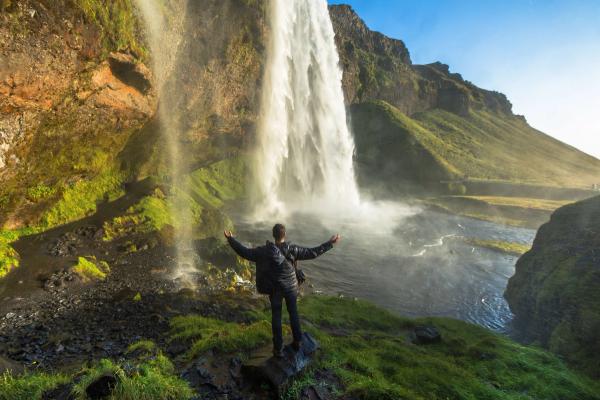
North (Akureyri, Lake Mývatn)
Northern Iceland, around Akureyri and Lake Mývatn, averages about 11.2°C (52.2°F) during July. This area gets less rain than the south, with about 34mm for the month. The north often enjoys more sunshine and clearer days than other parts of Iceland. Despite being much closer to the Arctic Polar Circle, it’s not as cold you would expect.
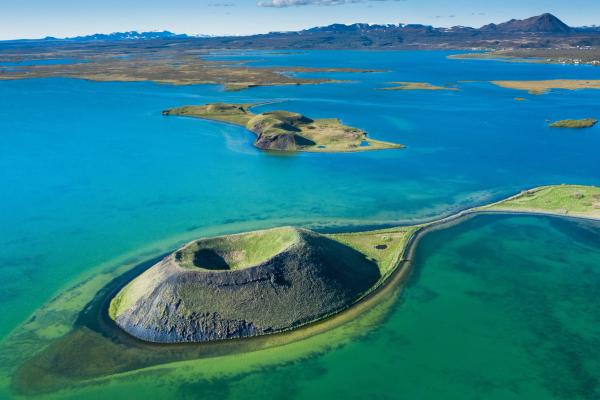
East (Egilsstaðir, Seyðisfjörður)
Eastern Iceland has average temperatures of about 10.0°C (50.0°F), but can reach 20-25°C (68-77°F) on sunny days. This region often records the warmest temperatures in Iceland during summer. The east often surprises visitors with its nice weather and has historically had some of Iceland's highest summer temperatures, making it especially good for hiking and outdoor activities in July.
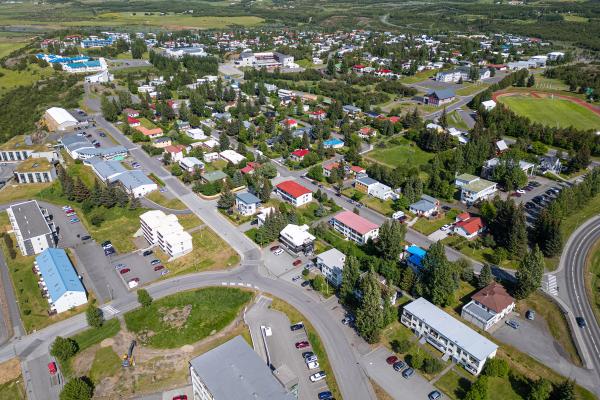
West (Snæfellsnes, Westfjords)
The western region, including the Snæfellsnes Peninsula and Westfjords, has temperatures around 9.4°C (48.9°F). This area typically gets more rain than other regions, with the Westfjords seeing up to 63mm in July. The west is usually windier because it's exposed to the Atlantic, which can make it feel cooler. This region has more rain and changeable weather, so it's good to keep your plans flexible here.
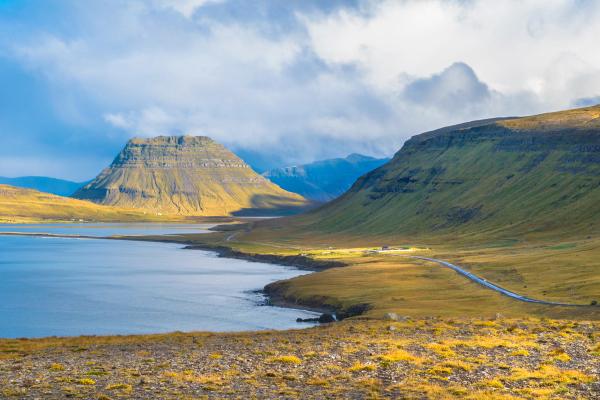
Highlands (Landmannalaugar, Sprengisandur)
Iceland's highlands interior usually has temperatures between 5-10°C (41-50°F) in July. It's noticeably cooler than coastal areas, with stronger winds and more variable weather. At night, temperatures in the highlands can occasionally drop close to freezing, even in July. Despite the cooler temperatures, July is one of the only months when you can access the highlands, giving you a chance to see some of Iceland's most remote and spectacular landscapes.
Each region has its own advantages—the north for better chances of sunshine, the east for warmer temperatures, and the south for easy access and better infrastructure. The west offers dramatic scenery but might have more rain, while the highlands give you a wilderness experience with cooler weather.
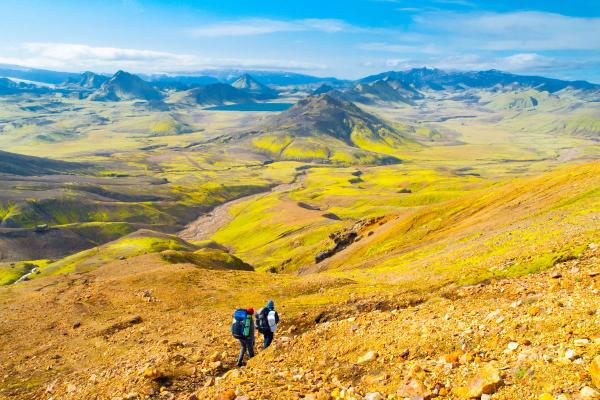
July 2025 Overview
Looking back at July 2025, Iceland had some interesting weather that gives us hints about what to expect in 2026.
Northern and eastern Iceland experienced unusually warm temperatures, with Akureyri averaging 13.5°C, 2.3°C warmer than usual. Additionally, Egilsstaðir and Hallormsstaður reached a record high of 14.2°C. Meanwhile, the south around Reykjavík was milder, averaging 12.1°C, only 0.5°C above normal.
The biggest story was the extreme heat, with temperatures hitting 29.5°C at Hjarðarland in Biskupstungur, one of the highest ever in Iceland. On the other hand, the west, especially Stykkishólmur, got a lot of rain, nearly twice the usual amount, while the east stayed much drier.
Winds were calmer than normal, about 0.5 m/s below average, which allowed the volcanic haze from the Reykjanes eruption to linger into mid-month.
Temperature swings were significant. While the east saw near-record highs, some highland spots, like Gagnheiði, dropped to -1.6°C at night.
This shows how different Iceland’s summer weather can be across the island, and it can change a lot from year to year. Keep this in mind when planning your 2026 trip!
What to Pack
Packing for Iceland in July means being ready for changing conditions. Here's what you'll need:
Essential Items:
- Waterproof and windproof jacket (crucial no matter what the forecast says)
- Waterproof pants (for hiking or rainy days)
- Hiking boots with good grip and water resistance
- Thermal base layers (lightweight for summer)
- Mid-layers (fleece or wool sweaters)
- Quick-drying pants (avoid cotton)
- Warm socks (preferably wool)
- Hat and gloves (yes, even in July)
- Sunglasses (for those long daylight hours)
- Swimsuit (for hot springs and pools)
- Eye mask for sleeping (midnight sun makes rooms bright)
Other Recommended Items:
- Camera with extra batteries (cold can drain them faster)
- Reusable water bottle (Iceland's tap water is excellent)
- Sunscreen (despite cool temperatures, UV exposure is high)
- Lip balm with SPF (wind makes lips chap quickly)
- Backpack with rain cover
- Power bank for charging devices
- Binoculars for wildlife spotting
The key to staying comfortable in Iceland is layering. You might start the day in a t-shirt and end it wearing a thermal layer, mid-layer, and waterproof jacket as conditions change.
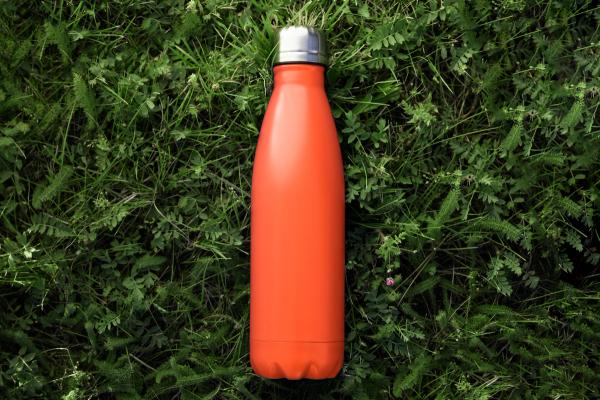
Things to Do
July's good weather opens up tons of possibilities for exploring Iceland. Here are some of the best activities:
Outdoor Activities:
- Hiking in highland areas like Landmannalaugar or Þórsmörk
- Whale watching (peak season with high success rates)
- Puffin viewing (July is prime time before they leave in August)
- Snorkeling or diving at Silfra Fissure
- Exploring ice caves in Katla volcano (one of the few accessible in summer)
- Kayaking in fjords or glacial lagoons
- Horseback riding through lava fields
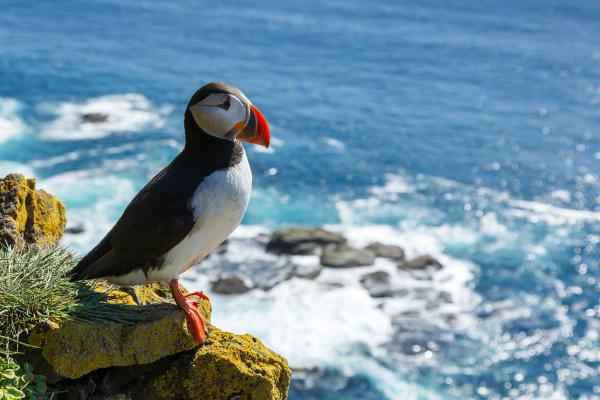
Road Trips:
- Complete Ring Road journey (ideal conditions with all roads open)
- Exploring the Westfjords (many roads are only accessible in summer)
- Driving highland F-roads to see remote interior landscapes
- Visiting Dettifoss and other northern attractions
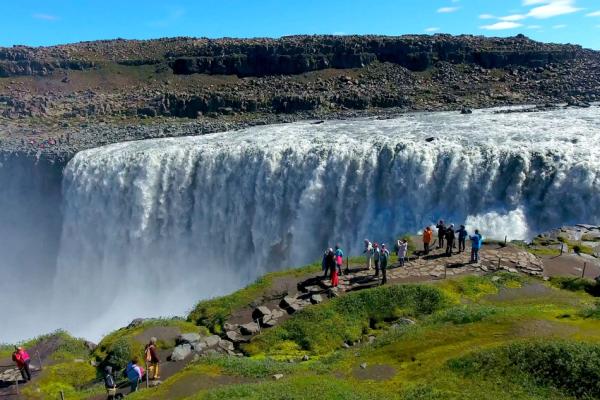
Cultural Activities:
- Attending summer festivals like Landsmót (horse festival) or town celebrations
- Visiting outdoor swimming pools and hot springs
- Taking midnight sun photography tours
- Berry picking (late July)
- Enjoying outdoor cafés in towns and cities
The long daylight hours mean you can pack more into each day, sometimes doing activities that would normally take separate days in other seasons.
Conclusion
July gives you the perfect mix of accessibility, milder temperatures, and maximum daylight for exploring Iceland. While temperatures stay moderate compared to other European destinations, the combination of long days and open roads makes it an ideal time to visit.
Just remember that "good weather" in Iceland might not match what you're used to at home. A successful trip means embracing the changing conditions as part of the adventure. Pack wisely, keep your plans flexible, and be ready to adjust your schedule based on day-to-day forecasts.
